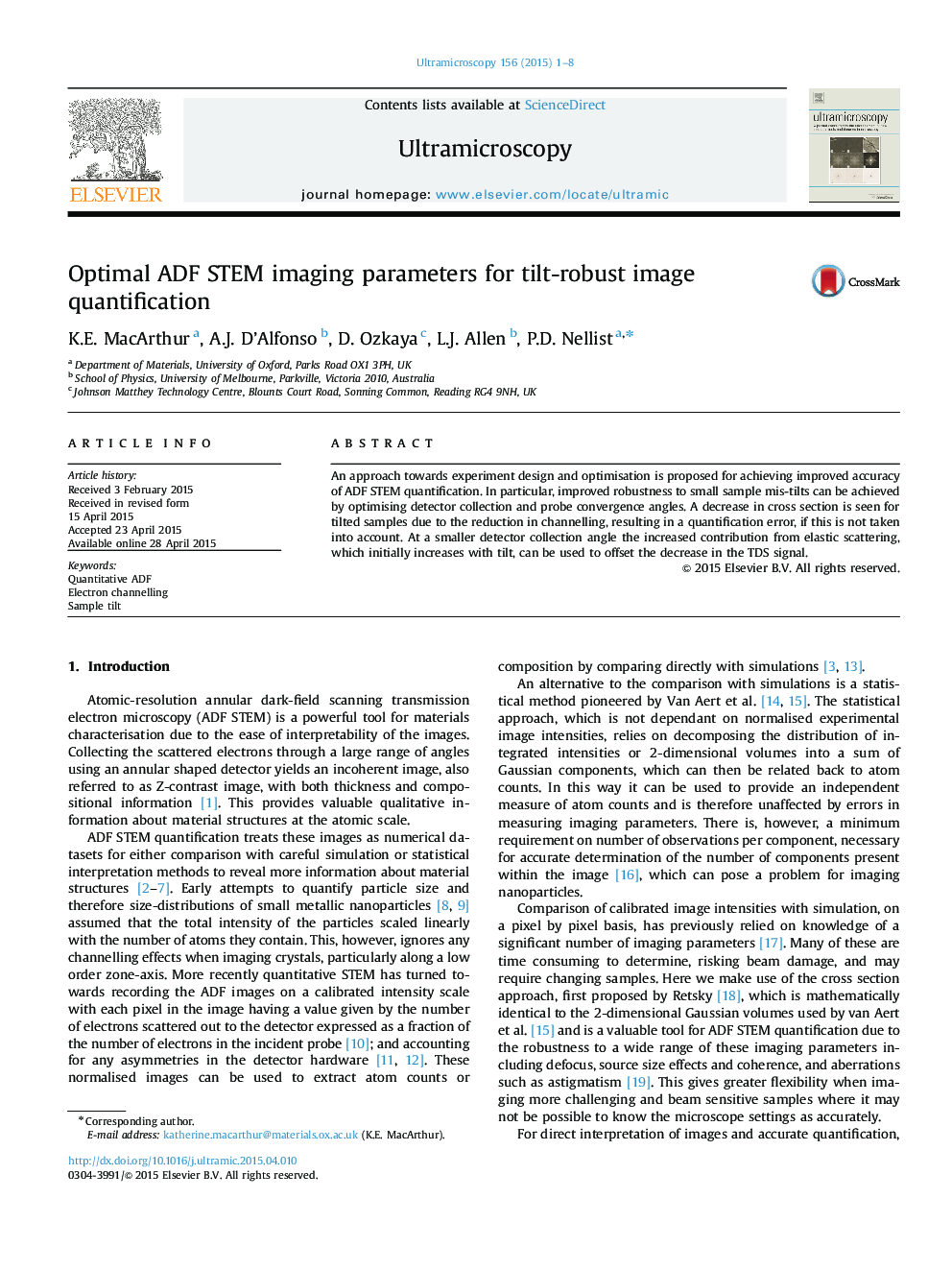| Article ID | Journal | Published Year | Pages | File Type |
|---|---|---|---|---|
| 1677396 | Ultramicroscopy | 2015 | 8 Pages |
•Experimental design is proposed for achieving improved accuracy of STEM quantification.•A decrease in cross section is seen for tilted samples due to a reduction in channelling.•This results in a quantification error if not taken into account.•Robustness to small sample tilts can be achieved at smaller detector collection angles.•The origin of this robustness lies in the balance between TDS and elastic scattering.
An approach towards experiment design and optimisation is proposed for achieving improved accuracy of ADF STEM quantification. In particular, improved robustness to small sample mis-tilts can be achieved by optimising detector collection and probe convergence angles. A decrease in cross section is seen for tilted samples due to the reduction in channelling, resulting in a quantification error, if this is not taken into account. At a smaller detector collection angle the increased contribution from elastic scattering, which initially increases with tilt, can be used to offset the decrease in the TDS signal.
